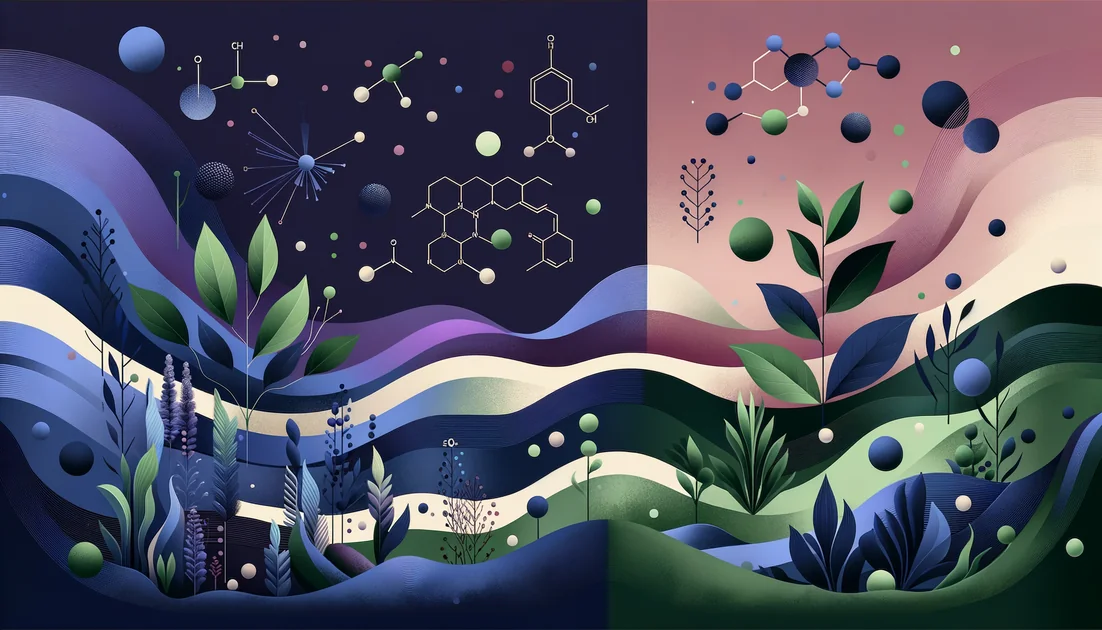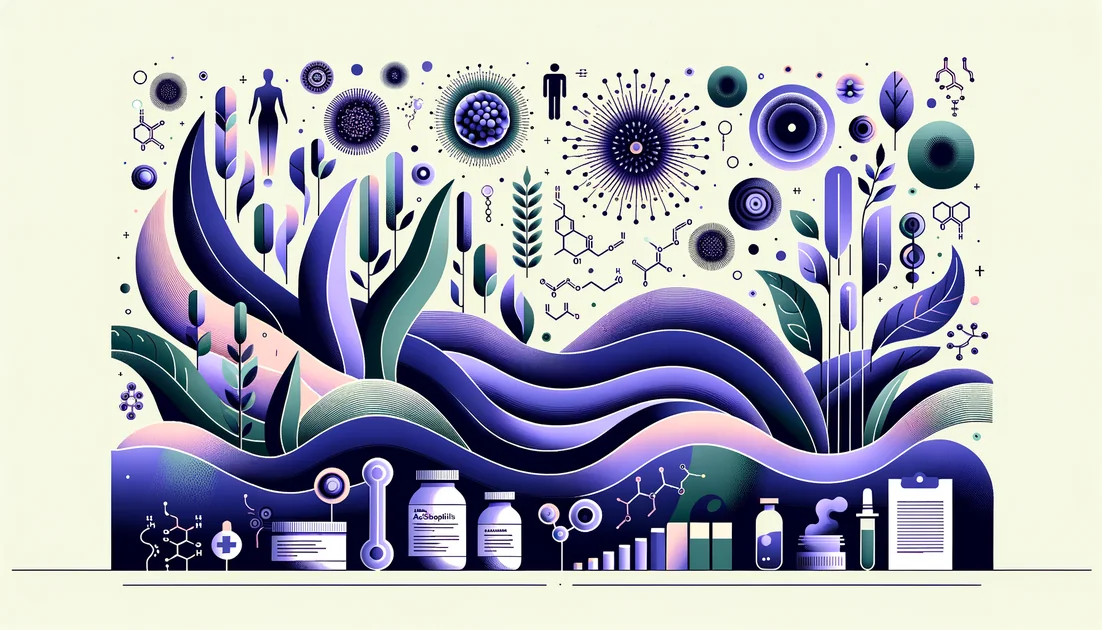
From Aztec "Cheese" to Space Smoothies: What Spirulina Really Does
In a bustling market five centuries ago, a soldier tasted green cakes that "taste like cheese." Today, astronauts sip green smoothies brewed from the same organism aboard the International Space Station. What happened in between—and what can spirulina actually do for you?
- Evidence
- Promising
- Immediate Effect
- Yes (some exercise/recovery markers within 1–2 weeks in small trials) → 4–12 weeks for nutrition and metabolic outcomes
- Wears Off
- Gradually over weeks after stopping; data limited
The lake that fed empires—and an idea that went to space
Bernal Díaz del Castillo, marching into Tenochtitlan in the 1520s, noticed vendors selling "little loaves.. made out of a sort of slime.. which taste like cheese." He was watching Aztecs trade cakes of spirulina skimmed from Lake Texcoco—a food so ordinary it barely merited a line in his chronicle, yet so concentrated that a mouthful colored with chlorophyll could stand in for a meal.[9] Half a world away, Kanembu women around Lake Chad still dry spirulina into dihé squares to thicken sauces—an elegant, low-tech protein strategy described by FAO researchers as part of a living food system.[10] Centuries later, engineers would look at the same microalga and see not just food, but life support. In 2018, ESA reported that its photobioreactors grew spirulina in orbit, recycling carbon dioxide into oxygen and edible biomass: "The green smoothie-like product was safe to add to astronaut diets as a source of protein."[7] NASA scientists have likewise explored spirulina for closed ecological life-support—tiny coils of life that breathe out oxygen as they grow.[8]
What's inside the green?
Spirulina (more precisely, Arthrospira) is a protein-rich, iron-bearing microalga whose signature blue pigment, phycocyanin, behaves like a fire blanket for the body's chemistry—soaking up "sparks" of oxidation and dialing down inflammatory signals. That chemistry has inspired a wave of clinical trials—not miracle-cure hype, but measurable effects in defined groups.
- In people with metabolic syndrome or type 2 diabetes, pooled analyses of randomized trials show spirulina can lower fasting glucose and improve cholesterol patterns (downward nudges in total and LDL cholesterol; small increases in HDL). Effects on longer-term HbA1c are mixed overall.[1][2]
- A recent add-on, double-blind trial in patients on metformin found that 2 g/day of spirulina for 3 months reduced HbA1c by about 1.4 percentage points and improved fasting glucose and triglycerides—promising, though from a single center and modest sample.[3]
Think of it this way: spirulina doesn't "hack" your metabolism; it nudges several dials at once—blood fats, fasting sugar, and perhaps the low-grade inflammation that keeps those dials stuck.
Stories from the field: when food must work like medicine
- In Kisantu, Democratic Republic of the Congo, malnourished children given 10 g/day spirulina stirred into their regular meals gained weight faster, and anemia markers improved significantly within 30 days compared with controls. It wasn't a stand-alone cure; it was a dense ingredient that moved numbers in the right direction, quickly.[4]
- In Burkina Faso, clinicians saw undernourished, HIV-infected and HIV-negative children gain weight and reduce anemia over 8 weeks when spirulina was layered onto standard diets—again, a food pressed into therapeutic service.[5]
These aren't polished lifestyle stories. They are pragmatic, sometimes messy, attempts to add protein and micronutrients where they're scarce, echoing the ingenuity of the Kanembu dihé and Aztec markets.
The surprise chapter: a detox puzzle from Bangladesh
Arsenic-tainted wells left villages in Bangladesh with skin lesions and systemic toxicity. With no specific antidote, researchers tried an unusual pairing: spirulina extract plus zinc versus placebo for 16 weeks. The spirulina-zinc group showed greater improvement in arsenic-related skin changes and reductions in arsenic in hair and urine.[6] One small trial doesn't make a guideline, but it's a striking example of microalgae stepping outside the smoothie bar.
Allergies, athletes, and the "blue switch"
Allergic rhinitis is an immune over-reaction. In a double-blind study, 2 g/day spirulina reduced IL-4—a messenger that drives IgE-type allergy—by about a third in allergic patients' immune cells, hinting at a calmer "default setting."[14] For athletes, spirulina's pigments may act like shock absorbers. Elite rugby players who supplemented through a season blunted spikes in lipid peroxidation and muscle-damage markers after brutal matches, recovering faster on laboratory measures.[15] Small trials also report subtle changes in heart rate and oxygen economy with short courses, more like fine-tuning than turbo-boosting.
"The beauty of the Arthrospira microorganism is that it is edible if pure." —European Space Agency, on flying a spirulina bioreactor and serving a safe "green smoothie" in orbit[7]
"Little loaves.. from a sort of slime.. which taste like cheese." —Bernal Díaz del Castillo, describing Aztec spirulina cakes in the Tlatelolco market, 1520s[9]
What spirulina is not
The myth-making around spirulina has been as fertile as the lakes that grow it. FAO chronicled the real, valuable traditions around dihé; it did not anoint spirulina as a magic cure. Modern reviews and meta-analyses point to promising benefits for metabolic health, certain inflammatory conditions, and nutrition support—tempered by variability in study quality and dose.[1][2][12] And there's a hard, modern caveat: purity. Spirulina itself doesn't make liver-damaging microcystin toxins, but other cyanobacteria in open ponds do. FDA has documented recalls when related algae contaminated products; independent researchers recently found microcystins and opportunistic bacteria across some retail items.[11][13] France's ANSES advises buying from trustworthy, controlled producers and reminds vegans that spirulina's "B12" is mostly inactive—don't count on it for that vitamin.[12]
If you're curious to try it
- Doses used in trials often range from 1–3 g/day, sometimes up to 8 g/day, taken with food. In diabetes and dyslipidemia trials, 2 g/day for 8–12 weeks is common; in immune or allergy studies, 2 g/day for 12 weeks; nutrition-support programs use food-like amounts (e.g., 10 g/day) under supervision.[2][3][4][14]
- Look for third-party testing and cultivation in controlled systems; avoid wild-harvested cyanobacteria mixes. This is where the astronaut lesson comes home: purity matters.[11][12]
- Who tends to benefit? People aiming to modestly improve fasting glucose or cholesterol; those needing compact protein and iron in constrained diets; athletes managing recovery stress; and, in clinical contexts, groups facing undernutrition or inflammatory bowel disease where small RCTs suggest improved iron status and quality-of-life markers.[1][2][4][15][16]
- Who should be cautious or avoid it? If you have autoimmune disease or are on immune-modulating drugs, if you use anticoagulants, or if you have phenylketonuria, discuss alternatives; and everyone should prioritize tested, toxin-screened products.[12][11]
Why this old-new food endures
Spirulina's story is less about miracles than fit: it fits alkaline lakes and backyard tanks; it fits a clinic's recipe for calorie-and-micronutrient density; it fits a space capsule where oxygen and protein must cycle. From Aztec "cheese" to space smoothies, the green thread is the same: a tiny coil of life that turns light and minerals into edible resilience. Used wisely—pure, appropriately dosed, and for the right problems—spirulina earns its place not as a panacea, but as a practical ally.[7][10]
Key takeaways
- •Promising metabolic effects: meta-analyses show reductions in fasting glucose and improved lipid profiles, though HbA1c results are mixed.
- •Useful clinical dose range: many studies use about 2 g/day for 8–12 weeks; supervised, food-like doses (e.g., 10 g/day) are reserved for specific programs.
- •Practical use: take with meals to mellow its ocean-green taste and reduce queasiness; treat it as a concentrated garnish, not a meal replacement.
- •Who may benefit: people targeting modest improvements in glucose or cholesterol, athletes supporting recovery, and those needing compact protein and iron.
- •Safety notes: don't rely on spirulina for vegan B12; choose products that disclose microcystin testing and consult a clinician if on glucose-lowering, immune-modulating, or anticoagulant therapy.
You might also like
Explore more of our evidence-led investigations, comparisons, and guides across every article style.

BulkSupplements.com (Hard Eight Nutrition LLC)
BulkSupplements: GMP-certified workhorse with recurring accuracy questions

Current (Actual) Body Weight method vs Goal/Ideal/Adjusted Body Weight method
For most healthy, non-obese and athletic readers, calculate protein from current body weight. If you have overweight/obesity or are dosing clinically, use goal/ideal/adjusted body weight to avoid overestimating needs. [1][2][6]


Lactobacillus acidophilus
In 1900, a pediatrician peered into an infant's diaper and changed nutrition history. Ernst Moro's "acid-loving" bacterium—now called Lactobacillus acidophilus—would jump from lab benches to grocery shelves, fuel a fad for "acidophilus milk," and later reemerge as a precision tool in clinical trials and even vaccine research. The twist? Its benefits were never one-size-fits-all; they depended on the exact strain—and sometimes on whether the cell walls were gently broken like a soft-boiled egg.

The Immune Vision Duo: Unlock What's Stuck
Context-dependent synergy: proven in deficiency settings (especially for persistent diarrhea and pregnancy night blindness), but additive or null elsewhere.

Tocotrienols
The stealthier cousins of vitamin E—built with springy tails that move differently in cell membranes and behave differently in your body.
